17 Apr 2014
Do Nicotine Patches Work If You Are Pregnant?
Cigarette use during pregnancy is associated with a range of health problems that can lead to serious or severe complications before or after childbirth. For this reason, public health guidelines strongly urge women not to smoke while pregnant. In a study published in March 2014 in the journal BMJ (formerly known as the British Medical Journal), researchers from several French institutions sought to determine if nicotine replacement patches, one of the common options for smoking cessation treatment, produce any real-world benefit for pregnant smokers. These researchers concluded that nicotine patches don’t appear to work any better for pregnant women than placebo treatments.
Smoking During Pregnancy
 Statistics compiled by the Centers for Disease Control and Prevention indicate that slightly over half (54 percent) of all women smokers suspend their cigarette use while pregnant. Still, significant numbers of women continue to smoke during the early, middle or late stages of pregnancy or throughout all stages of pregnancy. Known harms of fetal exposure to the chemicals in cigarette smoke include heightened risks for a pregnancy-ending miscarriage, heightened risks for delivering a baby prematurely, heightened risks for delivering a baby lacking in sufficient body weight, heightened risks for delivering a baby affected by one of several specific birth defects and heightened risks for delivering a child who will eventually die from sudden infant death syndrome (SIDS). In addition to the problems associated with direct exposure to cigarette smoke, developing children also have increased chances of being born underweight when exposed to secondhand smoke.
Statistics compiled by the Centers for Disease Control and Prevention indicate that slightly over half (54 percent) of all women smokers suspend their cigarette use while pregnant. Still, significant numbers of women continue to smoke during the early, middle or late stages of pregnancy or throughout all stages of pregnancy. Known harms of fetal exposure to the chemicals in cigarette smoke include heightened risks for a pregnancy-ending miscarriage, heightened risks for delivering a baby prematurely, heightened risks for delivering a baby lacking in sufficient body weight, heightened risks for delivering a baby affected by one of several specific birth defects and heightened risks for delivering a child who will eventually die from sudden infant death syndrome (SIDS). In addition to the problems associated with direct exposure to cigarette smoke, developing children also have increased chances of being born underweight when exposed to secondhand smoke.
Nicotine Patches And Pregnancy
Like other nicotine replacement therapy products (such as gum, nasal sprays, inhalers and lozenges), nicotine patches produce their benefits by delivering preset, relatively small amounts of nicotine into the bloodstreams of people affected by nicotine addiction. These nicotine doses allow a person to curb his or her cigarette intake while avoiding the onset of the withdrawal symptoms that commonly afflict individuals trying to quit smoking and interfere with successful smoking cessation. Some smokers try to quit with the help of low-strength, non-prescription nicotine patches that are available at all sorts of commercial outlets throughout the U.S. Others rely on stronger nicotine patches that require a doctor’s prescription. In some cases, nicotine replacement therapy forms the entirety of a smoking cessation strategy. In other cases, nicotine replacement forms part of a larger approach that also includes some form of counseling, brief training or behavioral therapy training.
Effectiveness Of Nicotine Patches For Pregnant Women
In the study published in BMJ, the French research team used information gathered from 402 pregnant women to assess the effectiveness of nicotine patches as a deterrent to cigarette use. These women, all of whom were over the age of 18 and in the second trimester of pregnancy, came from 23 French hospitals and had a daily nicotine intake of five or more cigarettes. Half (203) of the study participants received nicotine patches, while the other half received placebo patches that mimicked the appearance of nicotine patches. Both groups continued to use their respective patches until they delivered their babies at the end of pregnancy.
The researchers used several criteria to compare the effectiveness of the nicotine patches to the placebo patches. The main criteria for each woman were successful abstention from cigarette use and the delivery of a child with normal birth weight. Secondary criteria included the overall number of women in each group who remained cigarette-free and the time it took for any given woman to relapse back into cigarette use.
Only 11 women in the nicotine patch group remained abstinent from cigarette use over the course of the study; a nearly identical number of women (10) in the placebo group also remained entirely cigarette-free. In both groups, the average woman relapsed back into cigarette use after a period of 15 days. In addition, when compared to the babies born to the women who used a placebo medication, the babies born to the women who received nicotine patches were, on average, only heavier at birth by about 1.8 ounces.
During part of the study published in BMJ, the researchers increased the nicotine patch doses until these doses reached or exceeded the amount of nicotine the women normally consumed while smoking. Even this increase in medically supplied nicotine did not improve smoking abstinence or delay the average time to smoking relapse. The study’s authors concluded that nicotine patches, in particular, do not appear to provide any benefit as a smoking deterrent to women during pregnancy. Pregnant smokers should discuss all possible treatment options with their doctors.
Smoking cessation messages are public health advertisements and campaigns designed to encourage current smokers to stop using cigarettes, which contain the addictive substance nicotine. Some of these ads and campaigns focus on the steps required to quit smoking, while others focus on the reasons for quitting smoking. In a study published in March 2014 in the American Journal of Health Promotion, a team of American researchers compared the effectiveness of “how-you-can-quit” smoking cessation messages to the effectiveness of “why-you-should-quit” messages as motivations for actually attempting to cease cigarette intake.
Get The Anti-Smoking Message
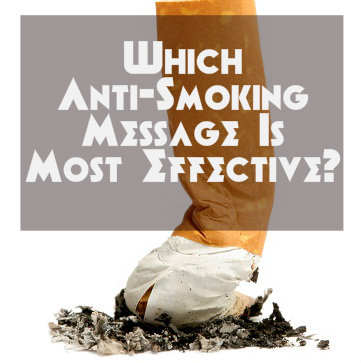 An agency inside the U.S. Department of Health and Human Services called the Substance Abuse and Mental Health Services Administration uses nationwide, annual survey information to track smoking rates among U.S. adults and teenagers. All told, about 22 percent of Americans in this broad age range smoke cigarettes each month. The peak smoking rate of 34.1 percent occurs among people between the ages of 21 and 25. People between the ages of 26 and 29 have a slightly lower smoking rate of 33.4 percent; in addition, close to a third (31.9 percent) of individuals between the ages of 30 and 34 smoke cigarettes. Three other segments of the population (people between the ages of 18 and 20, people between the ages of 35 and 39, and people between the ages of 45 and 49) also have a monthly smoking rate of over 25 percent. The monthly smoking rate drops below 20 percent only in adults age 60 or older and in children 17 and younger.
An agency inside the U.S. Department of Health and Human Services called the Substance Abuse and Mental Health Services Administration uses nationwide, annual survey information to track smoking rates among U.S. adults and teenagers. All told, about 22 percent of Americans in this broad age range smoke cigarettes each month. The peak smoking rate of 34.1 percent occurs among people between the ages of 21 and 25. People between the ages of 26 and 29 have a slightly lower smoking rate of 33.4 percent; in addition, close to a third (31.9 percent) of individuals between the ages of 30 and 34 smoke cigarettes. Three other segments of the population (people between the ages of 18 and 20, people between the ages of 35 and 39, and people between the ages of 45 and 49) also have a monthly smoking rate of over 25 percent. The monthly smoking rate drops below 20 percent only in adults age 60 or older and in children 17 and younger.
What Are Smoking Cessation Messages?
All smoking cessation messages have a target audience. In some cases, this audience is fairly broad and includes smokers from a range of backgrounds and segments of the population. In other cases, the target audience for a message is fairly narrow and includes only a single segment of the larger group of teen or adult smokers. In addition, some messages appear in isolation while others appear as part of larger, coordinated campaigns that continue for extended periods of time. Smoking cessation ads and campaigns can come from private institutions or from various levels of county, state or federal government. In addition, they can appear in a number of media settings, including TV, print or online outlets. Examples of recent campaigns undertaken on a national level include Tips from Former Smokers (from the Centers for Disease Control and Prevention) and Smokefree Teen (from the National Institutes of Health).
Which Anti-Smoking Messages Work?
In the study published in the American Journal of Health Promotion, researchers from an organization called RTI International used information gathered from 3,002 smokers age 18 or older to determine which smoking cessation messages have the greatest ability to foster quit attempts. The information-gathering sessions took place between late 2010 and early 2011; during these sessions, the study participants were exposed to two basic types of smoking cessation messages: those that focused on the ways in which smokers can halt cigarette use and those that focused on the real-world reasons for halting cigarette use. In turn, the “why-you-should-quit” messages were broken down into those that contained testimonials from other smokers and those that contained images demonstrating serious smoking-related health harms. Some participants viewed only one type of smoking cessation message, while others viewed various combinations of messages.
The researchers concluded that, compared to smokers who don’t view any smoking cessation messages, smokers who view only “why-you-should-quit” messages—or a combination of “why-you-should-quit” and “how-you-can-quit” messages—are significantly more likely to change their viewpoints on cigarette use and adopt a more pro-cessation outlook. They also concluded that, compared to smokers who don’t view any smoking cessation messages, most of the smokers who see “why-you-should-quit” messages are substantially more inclined to couple their change in smoking outlook with active attempts to halt their cigarette intake.
The authors of the study published in the American Journal of Health Promotion also concluded that, when viewed on their own, “how-you-can-quit” smoking cessation messages do not promote meaningful changes in smokers’ attitudes or an increase in smoking cessation attempts. Although they did not determine the long-term effects of exposure to “why-you-should-quit” messages, they believe that such messages may help promote ongoing cigarette abstinence. In addition, the study’s authors note that “how-you-can-quit” smoking cessation messages may not have their desired effect when used as a main technique for reaching smokers.
Read About How Stimulant And Smoking Addictions Can Be Treated Together
Heroin use has exploded, a national survey on drug use reveals, growing from 373,000 yearly users in 2007 to an estimated 669,000 in 2012. This alarming substance abuse trend highlights the need for drug rehab and for strategies that reduce heroin’s harmful impact. One of those strategies is the distribution of a medication called naloxone, which reverses the effects of heroin overdose.
Naloxone, also known by the brand name Narcan, is a non-narcotic drug that works by binding certain opioid receptors in the brain. Approved by the FDA in 1971, naloxone reverses sedation and respiratory suppression, heroin’s primary life-threatening effects. It can be administered via an injection, usually given in the upper arm or thigh, or as a nasal spray. After it’s been administered, the medication takes effect as quickly as five minutes or less. Naloxone is considered safe and nontoxic, and it doesn’t produce a pleasurable high when used. This medication treats overdoses from heroin and other narcotic drugs, including codeine and oxycodone.
Administering naloxone is a harm-reduction technique, which means it’s not necessarily intended to stop heroin use. Instead, its purpose is to reduce the harmful and potentially lethal impact of a heroin overdose. While death is, of course, the most serious consequence of overdosing on opioids, brain injury from oxygen deprivation is a very serious concern as well.
Heroin users who overdose are at risk for long-term health issues, ranging from coordination problems to communication difficulties. In severe overdose cases, the result can be a vegetative state. Brain injury damages both the physical and emotional well-being of the addict, but it also negatively impacts the well-being of his or her loved ones. Treatment of an overdose-related brain injury is expensive as well. If the addict is unable to pay for needed medical care, the community will end up bearing the burden.
Who Can Give Naloxone?
Naloxone has been available for years to emergency medical technicians, ambulance crews and emergency room personnel. However, in recent years, perhaps fueled by the increase in heroin use, public health officials have pushed to make it more widely available to other first responders. For example, naloxone is now carried by police officers in several communities, including one in New Mexico and five in Massachusetts.
The challenge, however, is that heroin overdoses sometimes result in injury or death before first responders arrive or before the drug user reaches an emergency room. This has spurred some public health officials to advocate putting naloxone directly into the hands of addicts, their loved ones and concerned friends. In fact, in 2012, the American Medical Association (AMA) announced its support of offering naloxone through community-based programs. This would allow the bystanders of an overdose to administer the potentially life-saving medication. Some states have already moved to make naloxone more widely accessible. For example, Washington State allows drug users, family members and concerned friends to carry the medication.
What Are The Benefits Of Naloxone?
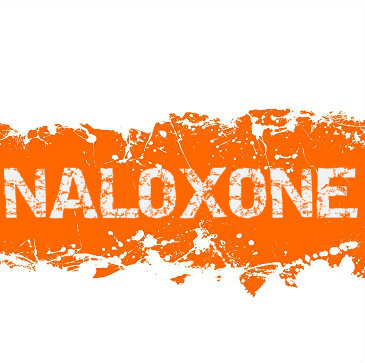 The potential benefits of naloxone are significant, and include the following:
The potential benefits of naloxone are significant, and include the following:
The drug saves lives. Research shows that using this medication reduces the number of deaths from opioid overdoses. A published study, which examined Massachusetts communities where first responders carried naloxone, reported 327 rescues from 2006 to 2009. The communities that had higher levels of training for naloxone use reported a nearly 50 percent reduction in opioid overdose fatalities. Those with lower levels of training had an approximate 30 percent lower death rate.
Naloxone is relatively inexpensive. A nasal spray naloxone kit costs in the ballpark of $25. This is extremely inexpensive when compared to the potential cost of brain damage or death due to a heroin-induced overdose.
It can be administered with minimal training. Naloxone, whether it is in injectable or nasal spray form, is easy to administer to someone who has overdosed on heroin or other narcotic drugs. Instructions are typically provided with the medication to help someone at the scene know when it’s time to give it and how to prepare the dose. For those who want to learn more about how to give naloxone properly, training is available through many community-based programs or from physicians familiar with the drug.
What Are The Downsides Of Naloxone?
Although the benefits of using Naloxone for opioid overdoses are impressive, use of the medication is not without its downsides. Negative aspects include the following:
The medication usually must be administered by someone else. By the time a heroin user needs naloxone, he or she is already likely unconscious. Naloxone is most effective when there’s a sober bystander able to watch for signs of overdose and administer the medication as quickly as possible. Unfortunately, many addicts use when they’re alone or with others who are also using. A sober bystander often isn’t anywhere in the vicinity. By the time someone does come onto the scene, it may be too late.
It doesn’t counteract the effect of other drugs. Naloxone only works for opioid overdoses, which means it has no impact when a person has ingested alcohol or substances like cocaine, benzodiazepines (such as Xanax or Valium), or methamphetamines.
Naloxone triggers withdrawal. Because the medication quickly reverses heroin’s effects, the user experiences withdrawal symptoms. These feelings are intense and uncomfortable; however, they’re not life-threatening. Perhaps the most dangerous aspect of withdrawal is that the heroin user will have a compelling urge to get high again.
The medication’s effects are temporary. Naloxone begins to wear off after 30 minutes, and most of it is gone after 90 minutes. However, a heroin high lasts from two hours in addicted users and up to six hours in new users. When the naloxone dose wears off, there may still be enough heroin in the body to reinitiate the high. If the original dose of heroin was large enough, respiratory suppression and sedation could start again. This would make an additional dose of naloxone necessary.
Bystanders may not call for help because they fear trouble with law enforcement. Loved ones or drug-using friends are sometimes highly reluctant to reach out to responders, even when those responders are armed with the potentially life-saving naloxone. This is often because they don’t want the person who’s using to get into legal trouble.
Some oppose its use. As with other harm-reduction strategies, such as needle exchange programs, there are always those who oppose its use. Critics charge that naloxone makes heroin users less likely to seek drug rehab because they no longer fear the consequences of an overdose.
Heroin abuse and addiction are serious community concerns. An overdose can lead to tragic and permanent consequences. While drug rehab treatment and abstinence are always the ultimate goals, it’s also important to address and reduce the harm done by drug abuse. Although it has its downsides, naloxone is a safe way to decrease the physical, emotional and financial impact of heroin overdose.
Read More About Successful Buprenorphine/Naloxone Treatment For Opioid Addiction
GHB is the common shorthand for gamma hydroxybutyrate, a drug of abuse identified as both a “club drug” and a “date rape” drug. People who use this drug repeatedly over time can develop a severe form of drug withdrawal that has the potential to produce fatal results. In a study published in February 2014 in the journal Drug and Alcohol Dependence, a team of Dutch researchers investigated the best options for treating individuals affected by GHB withdrawal. These researchers concluded that the appropriate option varies according to any given person’s level of involvement with GHB use.
What Is GHB?
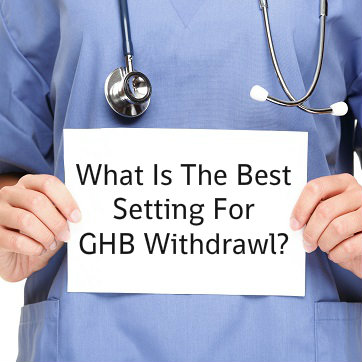 GHB occurs naturally inside the human brain, but only in small amounts. Trace amounts of the chemical also appear in certain types of wine and beer. A specific form of pharmaceutical GHB, called sodium oxybate (Xyrem), has legitimate medical use as a treatment for the sleep disorder narcolepsy. However, access to this medication is strictly controlled through federal law, and most people who use/abuse GHB recreationally rely on illegally produced batches made by clandestine drug manufacturers.
GHB occurs naturally inside the human brain, but only in small amounts. Trace amounts of the chemical also appear in certain types of wine and beer. A specific form of pharmaceutical GHB, called sodium oxybate (Xyrem), has legitimate medical use as a treatment for the sleep disorder narcolepsy. However, access to this medication is strictly controlled through federal law, and most people who use/abuse GHB recreationally rely on illegally produced batches made by clandestine drug manufacturers.
GHB alters normal brain and body function by reducing the rate of communication inside the central nervous system. The baseline effects of this reduction include both sedation and a form of euphoric intoxication. In addition, roughly two-thirds of all users of the drug lose consciousness. The euphoric and sedating effects of GHB largely account for its use as a club drug. The sedating and unconsciousness-producing effects of GHB largely account for its use as a date rape drug; its use as a date rape drug also stems from its ability to trigger amnesia. Other known potential effects of GHB use include hallucinations, nausea, vomiting, confusion, headaches and loss of body control. People who overdose on the drug can develop seizures, experience a dangerous decline in normal lung function, go into a coma or die.
Addiction To GHB And Withdrawal From It
When used repeatedly over time, GHB can trigger the long-term changes in brain function required to produce substance addiction. One of the classic signs of any form of drug or alcohol addiction is the onset of withdrawal symptoms when substance use ends or tapers off rapidly. In the case of GHB addiction, potential withdrawal symptoms include excessive sweat production, a highly anxious mental state, uncontrollable body tremors and sleeplessness. Some people develop severe forms of these symptoms that can lead to highly debilitating or even fatal changes in brain and body health.
What Is The Withdrawal Treatment Setting?
In the study published in Drug and Alcohol Dependence, researchers from three Dutch institutions sought to establish guidelines for the best way to address the effects of GHB withdrawal. They undertook this work because, despite the potentially severe nature of this withdrawal, some individuals may recover well in an outpatient setting rather than in a hospital. The researchers began the project by gathering case studies of patients going through GHB withdrawal from 40 professionals specializing in addiction medicine. These case studies were reviewed by another 15 addiction specialists who made recommendations for hospitalization or outpatient care for each patient under consideration. In the study’s third and final stage, five specialists with extensive experience in treating GHB withdrawal reviewed the rationale used for assigning any given patient to hospitalization or outpatient treatment.
All told, 20 patients going through GHB withdrawal were assessed and/or reviewed by the three groups of experts. The researchers concluded that two main factors account for the decision to either hospitalize a person going through withdrawal or recommend outpatient treatment: the amount of GHB used each day and the frequency of GHB intake. As a rule, patients who take 32 grams or more of the drug every day and use the drug at least every two hours require hospitalization when going through withdrawal. Patients who take smaller daily amounts of the drug and use the drug less than every two hours are potential candidates for outpatient withdrawal treatment.
The authors of the study published in Drug and Alcohol Dependence note that people with diagnosable psychiatric problems who go through GHB withdrawal may also require hospitalization rather than outpatient care. Conversely, people with strong support networks have an increased chance of receiving outpatient treatment when going through withdrawal. The authors believe that, overall, their work provides a solid framework that doctors can use when determining the best treatment setting for a person withdrawing from GHB use.
28 Jan 2014
Will I Always Be In Recovery?
Recovery is an important word for addicts. The word implies a process. When you are in recovery, you are working toward a goal. That goal is to never use again, to remain sober, to avoid relapsing. A process also implies that there is an end point, that at some time you will be fully recovered. Is that really possible or is recovery a lifelong state of being?
Is Addiction Really A Disease?
 Thanks to years of research, we are finally beginning to better understand drugs, how they affect the user, how they change the brain, and what addiction really is. It turns out that addiction is a disease of the brain, and a chronic one. Like any other chronic disease (asthma, diabetes, heart disease, arthritis), addiction will keep returning if left untreated.
Thanks to years of research, we are finally beginning to better understand drugs, how they affect the user, how they change the brain, and what addiction really is. It turns out that addiction is a disease of the brain, and a chronic one. Like any other chronic disease (asthma, diabetes, heart disease, arthritis), addiction will keep returning if left untreated.
Some people still cling to the idea of addiction as a matter of willpower only, but the truth is that drugs change your brain. This means that giving up drugs becomes a difficult process requiring professional treatment. While people being treated for diseases like arthritis and high blood pressure are in recovery, so too are addicts going through the treatment process. If someone with high blood pressure stops taking his pills, his symptoms will return. If a drug addict stops seeking treatment, odds are he will start using again.
Is It Possible To Be Recovered From Addiction?
Research shows that drugs change your brain, both chemically and physically. The more you use and the longer the duration of use, the more changes will occur. Research also shows that these changes can improve with abstinence from drugs, but that they may never fully reverse. Addiction forever changes you, which means that being completely recovered may never be possible.
It may sound hopeless, but take strength in knowing that the longer you stay sober, the easier it becomes to resist the urge to relapse. Although your brain may not completely recover from drug use, it comes very close. Studies show, for instance, that when a meth user abstains for just 14 months, her brain returns to a near normal state. From that point on, avoiding relapse becomes monumentally easier.
How You Can Help Yourself And Others In Ongoing Recovery
It may seem like being recovered is a goal for which all addicts should strive. If you are recovered, all your problems are over, right? For the addict, the word recovered is a dangerous one. If you believe you are recovered, you might believe that you are not vulnerable to relapse. A recovering addict always carries that possibility. Even an addict who has been sober for decades could relapse and hit rock bottom again.
Being forever in recovery may seem daunting, but it protects you from becoming too relaxed about your addiction. It also gives you a reason to be continually improving yourself and your life. Always striving toward being a better and healthier person is a great way to live. Most people become stagnant in their lives. You, however, have the opportunity to be always bettering yourself.
Use your recovery as a tool and a process for becoming a better person. As you resist the urge to relapse, improve your life in other ways as well. Use activities like volunteer work, your career or spending time with loved ones as ways to be a good person, and to be successful in recovery. Turn to exercise, healthy eating or spirituality to make your life better and to stay clean. You may never fully recover, but you will always be in the process of living your life to its greatest potential.
Read More About Starting Your Life Over In Recovery
A new report shows a rise in U.K. hospital emergency room visits by adults in their forties for drug or alcohol issues. The country’s health providers are determined to continue tackling the issue of drug and alcohol abuse as they strive to lower the rate of substance abuse.
The report came from data firm Dr Foster Intelligence. The group used ER admissions records as the basis for who is most often abusing drugs and alcohol and how often that abuse reaches the level of required hospitalization. According to their 2013 Hospital Guide:
Hospitalizations For Drug And Alcohol Abuse
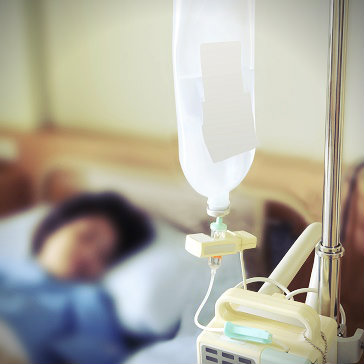 19 percent of ER admissions of 40-44 year olds were directly related to alcohol or drug use. That figure was highest among all age groups.
19 percent of ER admissions of 40-44 year olds were directly related to alcohol or drug use. That figure was highest among all age groups.- 18 percent of 45-49 year old admissions were for the same alcohol or drug reasons.
- In 2002-2003 the average age for a binge-drinking related hospitalization was 16 years. By 2004-2005 the typical age was 19. In 2012-13 the average age of those entering the hospital for binge drinking was 32 years.
- Despite the rise in average age for binge drinking ER visits, adolescents and young adults remain the most apt to need hospital care for binging.
Based on the Dr Foster report, young people are revealing more wisdom than their parents. Part of the problem is that an alarming number of patients don’t seem to be finding their way to recovery:
- The typical age of a person needing hospitalization for drugs or alcohol reasons in 2002-2003 was 41 years. In 2012-2013 the typical age was 43.
- Dr Foster found that over 500,000 individuals needed hospitalization for their alcohol or drug abuse at least one time during the past three years.
- At least 120,000 of those admitted to the hospital were 40-something years old. That is double the number of folks in their 20s or 60s who needed hospital care for drugs or alcohol.
Repeat ER Visits For Drugs Or Alcohol
Looking at all hospital admittances for alcohol or drugs in 2012-2013 a surprising 36 percent had already been admitted more than one time for the same problem in the past. And five percent had been in the hospital for drug or alcohol issues five times or more.
The problem appears to be most acute among the poor in Britain, with 36 percent of ER visits coming from the poorest regions of the country, and only nine percent of them coming from wealthy sections of the population.
A Dr Foster spokesman said that their figures were likely on the low end of actual numbers. The group only used hospital admittances where alcohol or drugs were 100 percent responsible. Left out were the high number of other admissions where substances played a key role.
Turning The Substance Abuse Hospital Visit Problem Around
Healthcare workers and National Health Services spokespeople say that there are ways to turn the problem around. For example, in 22 percent of the hospitalizations no general practitioner was listed on the health form. This could indicate that people are attempting to hide their problem from their primary care doctor rather than use them as a resource. If primary care doctors would use the NHS Healthcheck guide as a screening tool for substance abuse, more cases might be able to be treated before they reached a critical stage.
Hospitals also intend to implement more direct interventions by health professionals. Placing nurses who function as alcohol liaisons in the ER is one way to accomplish that goal.
Read More About Increased ER Visits For Surprising Drugs
04 Nov 2013
Drug Rehab Treatment For Doctors?
Addiction is a mental health issue that is best treated by a team of professionals, including a psychiatrist who specializes in addiction. This is not the type of disorder that can be adequately addressed by a family doctor or general practitioner and very few active addicts can successfully treat themselves. Drug rehab centers have been set up all over the country to deal with addiction-related disorders.
Certain individuals (especially those who have access to addictive medications, routinely witness other people’s trauma, or have high-stress professions) are incredibly vulnerable to addiction disorders and may require even more specialized addiction treatment than members of the general population.
Doctors Reluctant To Enter Treatment
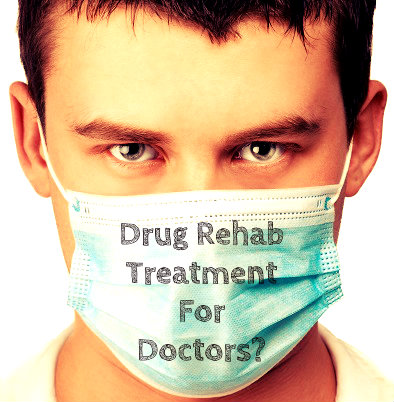 One such subset are physicians who have become addicted to drugs or alcohol and need to enter a drug rehab facility to recover, either voluntarily or at the request of an employer or licensing body. However, since the mere disclosure of the existence of the disorder can mean the end of a doctor’s career, physicians are often reluctant to participate in mainstream addiction treatment programs where anonymity is not assured and significant periods of time off work is required.
One such subset are physicians who have become addicted to drugs or alcohol and need to enter a drug rehab facility to recover, either voluntarily or at the request of an employer or licensing body. However, since the mere disclosure of the existence of the disorder can mean the end of a doctor’s career, physicians are often reluctant to participate in mainstream addiction treatment programs where anonymity is not assured and significant periods of time off work is required.
However, when addressing the fact that disclosing an addiction problem can threaten a physician’s professional career and reputation, one must weigh the potential fallout against the potential harm suffered by a patient who is being treated by someone under the influence, in withdrawal or just hung over. Keeping in mind the doctor’s oath to “first, do no harm”, the necessity to seek professional treatment for a drug or alcohol problem is obvious. Professional treatment programs can help physicians get the help they need while minimizing damage to ongoing careers.
Specialized healthcare for doctors as patients is not a new concept. Over the past few decades, states have sponsored their own physician health programs with the goal of encouraging doctors to seek treatment for issues that, in the absence of assured privacy, they would tend to keep hidden. Addiction has been, and continues to be, one such disorder, where the professional stigma attached to entering drug rehab can follow a doctor even after recovery.
Physician Addiction Treatment Steps
The hallmark of any good physician health program will be an addiction treatment plan completely individualized to meet each doctor’s treatment goals in a way that best assures confidentiality and minimizes career disruption. During the initial evaluation, intake professionals at the physician health program will evaluate not only the level of drug or alcohol addiction, but also screen for co-occurring addictive behaviors and other mental health disorders.
There will often be a team of highly qualified addiction professionals working together to help the physician achieve lasting sobriety and, in some cases, may communicate with professional monitoring agencies when treatment has been mandated by a licensing body.
Support For Family And Staying Sober
In addition, support for partners, spouses, and children will be offered through specialized family programs. After initial recovery, the physician treatment center may offer continuing care to help the doctor maintain sobriety even after he returns to his job. This is especially important when the presence of triggers, such as medications, stress and patient trauma, will continue to be an everyday occurrence.
The most important aspect of physician treatment programs, however, is that they work. When matched with an appropriate drug rehab, doctors can get and stay sober even when their careers require them to be in the presence of powerful triggers on a daily basis. Recent research surrounding professional addiction treatment for doctors shows that this specialized type of care can dramatically reduce the rate of relapse after initial sobriety (as low as 3%) and help save careers. In fact, over 95% of participants in physician health programs successfully return to work. In comparison, the US population suffers a staggering 50% relapse rate.
Prescription drug addiction—especially to opiate painkiller medicines like fentanyl—is killing Americans in alarming numbers. In 2010, more than 12 million Americans reported using a prescription painkiller non-medically, and the rates of overdose deaths have more than tripled since 1990. Painkillers are responsible for more deaths than heroin and cocaine combined—so the legitimately prescribed medicines sitting in your cabinet currently pose a bigger public health risk than the illicit narcotics found on street corners.
Since drug addiction is a disease that does significant damage to the health and lives of those affected, many people would like to believe that their insurance provider will look out for them if they spiral into self-destruction. A new report reveals, however, that this is far from the truth. In reality, insurers place numerous restrictions on those seeking medicines that have been shown to help people struggling with opiate addiction.
The Epidemic of Prescription Painkiller Abuse
More and more people are becoming aware of the risks of prescription painkiller abuse, but the death rates still paint a shocking picture of the state of pain management in the U.S. The main issue is that we’re still dependent on opiate medicines (which bear close chemical similarities to illicit drugs such as heroin) and these have a significant risk of addiction and also a notable potential for overdose. Taking too much of a prescription painkiller can produce euphoria. As a result, many people who are prescribed these medication s find themselves regularly exceeding the recommended dosage from their doctor. According to the CDC, sales of prescription painkillers like Vicodin, OxyContin, Percocet and Duragesic have increased by 300 percent since 1999, providing a startling parallel to the rates of overdose death.
s find themselves regularly exceeding the recommended dosage from their doctor. According to the CDC, sales of prescription painkillers like Vicodin, OxyContin, Percocet and Duragesic have increased by 300 percent since 1999, providing a startling parallel to the rates of overdose death.
The key point is that drug addiction is a chronic, relapsing disease just like asthma and diabetes, and users (while they may have chosen to take the substance initially) quickly lose control over their behavior and are unable to stop taking the drugs. Their brains have adjusted to the continuous supply of opiates, so that without them they’re left unbalanced and can experience unpleasant withdrawal symptoms. This means that patients experiencing chronic pain are given medicines that can easily lead them into addiction—even if they have a legitimate reason for taking large doses of the medicine. Just like asthmatics can’t choose to re-open their airways and diabetics can’t increase their insulin levels through sheer willpower, those struggling with addiction can’t just stop craving drugs.
Treatment Is Available
This is why, alongside psychological interventions, drugs such as methadone, buprenorphine and naloxone have been developed to help people struggling with opiate addictions. While methadone and buprenorphine are used to help users gradually decrease their opiate consumption, naloxone is used specifically to counter the effects of an overdose. The key point here is that medicine that could help with the epidemic is available; it isn’t that the medicine doesn’t work or hasn’t been invented.
Insurer Restrictions
It is clear that while opiate painkiller abuse is one of the most significant causes of death in the U.S. today, a mixture of psychological and pharmacological interventions can be used to treat anybody affected. The only problem is that they often aren’t being used and the paper from the Avisa Group—which was commissioned by the American Society of Addiction Medicine—reveals the reasons in undeniable detail.
Firstly, it shows that rural or especially poor areas have higher rates of overdose from prescription medicines, and that Medicaid users are also at an increased risk. The Affordable Care Act, due to come into effect in January, will dramatically increase the numbers of drug-addicted Americans enrolled with Medicaid and other health insurance plans. This sounds like a good thing, but the benefits are limited when you consider the wide range of restrictions placed by providers on the users of medicines like methadone, buprenorphine and naloxone.
The list of restrictions is unfortunately long and inevitably causes a great deal of harm by making it harder to access potentially life-saving medicines. Some medicines aren’t covered by specific insurers or state Medicaid programs, there are limits on the dosages allowed (which don’t always allow for the recommended dosage of the medicine), unrealistic limits on refills and limits on the amount of medicines such as buprenorphine and methadone that you can be prescribed over the course of your lifetime (which are unheard of for other medicines).
Perhaps most shockingly, the insurance companies require authorization and re-authorization processes to be completed, which become more complex the more times a patient has to complete them. These include things like the requirement of counseling before authorization is granted, and this often also involves the insurance companies demanding the counselor’s treatment notes and the patient’s attendance records before making a decision. In many cases, cheaper treatments (which are considerably less likely to be effective) must be tried before authorization is granted, and the entire process can take several days or even weeks. During this time, it’s inevitable that some drug abusers relapse, overdose and die as a result.
Still Fighting Stigma?
The fact that such restrictions don’t exist for other medicines is the worst point revealed by this report, because it essentially shows that addiction is still being stigmatized. How you can morally justify imposing a lifetime restriction on treatment for somebody suffering from a chronic condition is completely beyond comprehension. Nobody would tell a diabetic that they’ve used up their lifetime supply of insulin, yet it’s commonplace for drug users to be told the equivalent. It reflects a deep-seated assumption that drug addiction is somehow a “choice,” and this assumption must be shattered if we’re ever to reduce the public health impact of prescription painkiller addiction.


